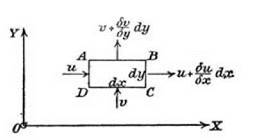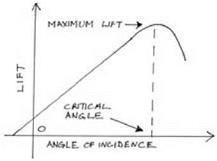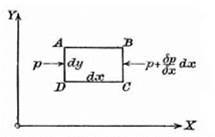Prandtl wrote his paper on the boundary layer while holding the chair of mechanics at the technische Hochschule in Hanover. Felix Klein (fig. 7.3) soon arranged for him to be called to Gottingen. In subsequent years Klein continued to use his contacts with powerful government ministers, such as Friedrich Althoff, to support Prandtl and his work. Although his greatest mathematical achievements were now behind him, it was during the period 1890 -1914 that Klein was at the height of his influence as an academic politician.19 The institutional structures created in Gottingen by Klein provided the context for Prandtl’s aeronautical work. It is hardly surprising that Klein always remained a figure whom Prandtl revered.20
In the years from the turn of the century and through the period of the
|
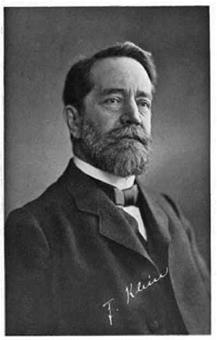
figure 7.3. Felix Klein (1849-1925). Klein, one of the greatest mathematicians of his time, has been called a “countermodernist,” but he was a tireless academic reformer and the mentor of Ludwig Prandtl. Klein brought Prandtl to Gottingen and encouraged his aerodynamic research. (By permission of the Niedersachsische Staats – und Universitatsbibliothek Gottingen)
|
Weimar Republic, Gottingen was a place of extraordinary intellectual brilliance in the fields of mathematics and physics. The university was the home of not only Felix Klein but David Hilbert, Hermann Minkowsky, and Hermann Weyl. They all played leading roles in the sometimes tense discussions that took place over the mathematical foundations of general relativity and the geometrical nature of space, time, and matter. It is right that these aspects of the Gottingen scene have attracted the attention of historians of science and have been subject to detailed analysis.21 Nevertheless, for my purposes it is important to ensure that this aspect of Gottingen does not dazzle us. It must not obscure the very different character of the work done by Prandtl and his school.
The two greatest Gottingen mathematicians of that time, Klein and Hilbert, represented divergent intellectual tendencies. Hilbert’s work can be seen as formal and abstract, whereas Klein’s was more concrete and intuitive. Hilbert has been described as a “modernist,” while Klein has been presented as a “countermodernist.”22 The differences between the work of the two men are a matter of continuing discussion among historians of mathematics. The sharpness of the contrast between them has, perhaps, been blunted by recent scholarship, and the degree of overlap in their interests is now better appreciated.23 Despite this, something of the older polarity still remains. Both men wanted to increase unity in the field of mathematics, but they sought unity in different ways and aspired to a qualitatively different kind of unity. Hilbert looked for unity through powerful methods and results that would radically reconfigure what had gone before. Klein sought unity through an encyclopedic and cumulative arrangement of results. He was opposed to the bitter sectarianism of the competing “schools” of mathematicians in the German universities and sought to cure it not by the victory of one tendency, but by an ordering of mathematical knowledge that was at once inclusive and hierarchical. The historian of mathematics David Rowe was surely right when he treated Klein’s great, collective project—the Encyklopadie der mathematischen Wissenschaften—as a revealing expression of Klein’s conception of mathematical knowledge and its proper organization.24
Klein’s tireless organizational activities have been subject to detailed analysis by, for example, Manegold, Pyenson, Rowe, Schubring, and Tobies.25 The main outlines of the story, as it bears on Gottingen aerodynamics, can be quickly sketched. After his visit, as a representative of the Prussian government, to the World’s Fair in Chicago in 1893, Klein became convinced of the need for German universities to attach more importance to applied science and technology. By 1897 he had been able to persuade the government and the University of Gottingen to create an institute for applied physics. In 1898 Klein and Henry von Bottinger, the vigorous and persuasive chairman of the Bayer chemical company, founded the Gottinger Vereinigung zur Forderung der angewandten Physik und Mathematik. This was a novel institutional vehicle by which commercial firms could finance applied research in the university.26 On this basis, in 1905, the original Institute for Applied Physics grew into the Institute for Applied Mathematics and Mechanics under Prandtl and Runge.27
When Klein was pressing the authorities to appoint Prandtl, he was explicit about the engineering connection.28 He introduced Prandtl as someone “who combines the expert knowledge of the engineer with a mastery of the apparatus of mathematics and has a strong power of intuition combined with a great originality of thought” (“der mit der Sachkenntnis des Ingenieurs und der Beherrschung des mathematischen Apparatus eine starke Kraft der Intuition und eine grofie Originalitat des Denkens verbindet”; 232). It was Klein who prompted Prandtl to bring problems connected with airships and aerodynamics within the scope of his new institute.29 The Motorluftschiff – Studiengesellschaft, the Society for the Study of Motorized Airships, which had been founded in July 1906, provided the finance for setting up a modeltesting facility at Gottingen, the Modellversuchsanstalt, with its wind channel designed by Prandtl and constructed by Fuhrmann. The channel was given a test run in December 1908 and went into operation in January 1910. In October 1913 the model-testing facility was taken over by the university.30
There is no doubt that Prandtl was in close contact with all the leading mathematicians and physicists at Gottingen. He went with them on their afternoon walks; he plotted with them over local academic politics; he sat at the “high table” along with Klein and Hilbert during the intimidating meetings of the Gottingen Mathematical Society.31 He was a friend and neighbor of Karl Schwarzschild, who was at work solving the field equations of Einstein’s general theory of relativity.32 Unlike that of his colleagues, Prandtl’s intellectual life was not dominated by the struggles over the nature of gravity or the structure of matter. His mathematical heritage lay elsewhere, in the technis – che Mechanik of the engineering tradition and August Foppl’s textbooks.33 The significance of this tradition is conveyed with some force by the lengthy account that Runge and Prandtl wrote in 1906 describing the history and work of their Institute for Applied Mathematics and Mechanics.34 It is full of enthusiastic and detailed specifications of pumps, boilers, condensers, dynamos, diesels, turbines, and electrically driven ventilators (which were used in the aerodynamic experiments). No wonder their colleagues made sly jokes about the Department of Lubricating Oil.35 This was not the world of the philosopher-mathematician or the physicist-as-cosmologist, any more than it was the world of Horace Lamb, Augustus Love, or Lord Rayleigh. Certainly the Cambridge mathematicians would not have chosen the words with which Runge and Prandtl ended their article:
Die technischen Wissenschaften sind reich an Kapiteln, deren volles Verstand – nis eine tiefe mathematische Bildung erfordert. Der Unterricht setzt sich zum Ziel, die Entwicklung der mathematischen Methoden zu vereinigen mit dem vollen Verstandnis der praktischen Probleme in dem Umfang und in der Fas – sung, wie sie sich dem ausubenden Ingenieur darbieten. (280)
Technical science is rich in material whose full understanding demands a deep mathematical education. The goal of the teaching [at the institute] is to unite the development of mathematical methods and a complete understanding of practical problems in as far as they concern, and in the manner they present themselves to, practicing engineers.
This was neither the voice of Tripos-oriented Cambridge, nor the voice of the mathematical Gottingen that has attracted the lion’s share of the historian’s attention, but it was the voice of Prandtl’s Gottingen. There is no problem in acknowledging this difference as long as it is recognized that the University of Gottingen was not a unified intellectual environment. Of course, there was overlap between its different parts both personally and institutionally: Runge had worked on atomic spectra and von Karman was a friend of Max Born’s and collaborated with him on the quantum theory of specific heats.36 But it was engineering that defined the orientation of the aerodynamic work, and this orientation had an institutional niche in Gottingen thanks to Klein’s efforts.37
Institutional plurality was wholly consistent with Klein’s vision and practice. Mathematics, for Klein, always had an integrating function in science, but that function was to be discharged in diverse ways. It required coordination and cooperation, but it did not require that everyone have the same preoccupations. That would have run counter to the encyclopedic outlook that informed Klein’s organizational plans. Klein had himself lectured on mechanics at Gottingen and had tried to offset the tendency toward excessive mathematical abstraction. In doing this he had, as von Mises put it, restored “the essential but almost lost connection with ‘technical mechanics.’”38 In 1900 Klein gave a general lecture titled “Ueber technische Mechanik” in which he sought to capture the special qualities of the discipline.39 Like August Foppl, Klein asserted that practitioners of technical mechanics had their own Fragestellung, that is, their own way of posing and answering questions. It involved subtle judgments and made unique demands. In particular Klein noted the problematic relation between technologically oriented mathematics and the established knowledge of basic physical principles: “Es ist vielfach nicht moglich, die Erscheinungen mit den Principien oder Grundgleichun – gen der classischen Mechanik in luckenlosen Zusammenhang zu bringen” (28) (Very often it is impossible to bring phenomena into a rigorous relationship to the principles and fundamental equations of classical mechanics). In the eyes of some of Klein’s technological critics, these sympathetic methodological insights were not enough. Nor were Klein’s Gottingen seminars on elasticity, graphical statics, and hydrodynamics always deemed a success. The implied commitment to technology, said the critics, was inadequate. This was the line taken by the engineer H. Lorenz, who had been brought to Gottingen by Klein but who had left in disappointment and, in a flurry of anti-Klein criticism, had taken himself off to the TH at Danzig.40 Klein was always fighting on two fronts. On the one side were those within the universities who argued that technology was not a fit subject for a truly academic institution, and on the other side were those within the technische Hochschulen who saw technology as the special preserve of these institutions. Both sides resented Klein’s suggestion that the universities involve themselves with applied science and technology.
Klein’s attempts to meet these conflicting accusations were not always successful. He eventually got his way, but not without frustrations and compromise. He supported the technische Hochschulen in their fight for the right to grant doctoral degrees, but there were delicate issues of status involved. Klein tried to find a division of labor in which different roles were to be played by the different institutions. On one occasion, in 1895, he sought to convey his vision by means of a military metaphor. He spoke of the universities as providing the Generalstabsoffiziere der Technik or “general-staff officers” of technology, while the products of the technical institutions would constitute the “frontline officers.”41 Perhaps Klein thought that the heroic image of frontline combat would make the suggestion acceptable to colleagues in the technische Hochschulen. If so, he was wrong. The implied disparities of rank and status were too blatant to ignore.
One of those who took offense was August Foppl. Without naming Klein as the source of the military metaphor, Foppl pointedly remarked that if one were going to speak in these terms, then each different arm of the military service (Waffengattung) should be accorded equal value. Were they not all equal as comrades in arms? The route to the top, and promotion to high command, should depend on the qualities of the individual, not the particular branch of the service in which they happened to be trained.42 But while Foppl bridled at the condescension, his son-in-law was a beneficiary, and exemplification, of Klein’s rank ordering. Prandtl’s institute was devoted to fundamental questions in the field of technology, and he soon occupied a position in which he could influence the strategy of aerodynamic research. Prandtl was indeed a Generalstabsoffizier, and the banner under which his army marched was inscribed with the word “Engineer.”
The point is confirmed by the qualifications of those whom Prandtl recruited to serve with him. They prefaced their names with their engineering diplomas and styled themselves Dipl.-Ing. Fuhrmann, Dipl.-Ing Foppl, Dipl.- Ing. Betz, Dipl.-Ing. Wieselsberger, and Dipl.-Ing. Munk.43 Theodore von Karman (fig. 7.4) also had an engineering training and was a graduate of the Royal Technical University of Budapest. He had originally come to Gottingen to do research with Prandtl on elasticity and the strength of materials but, as he was fond of recounting, turned to hydrodynamics through reflecting theoretically on the experimental difficulties of his colleague Karl Hiemenz.44 This was the origin of von Karman’s work on the stability of vortex motion and his mathematical analysis of the shedding of vortices that formed a flow pattern called a Karman vortex street.45 A number of Prandtl’s inner circle
|
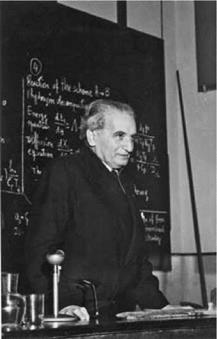
figure 7.4. Theodore von Karman (1881-1963). Von Karman trained as an engineer in Hungary and then worked with Prandtl in Gottingen. Later he moved to the technische Hochschule in Aachen and built up a rival institute of aeronautics and fluid dynamics. (By permission of the Royal Aeronautical Society Library)
|
eventually left Gottingen to take up positions in the technische Hochschulen. Foppl, Wieselsberger, and von Karman all went to Aachen, making it a powerful rival to Gottingen. Aachen was not Gottingen, but von Karman was not a humble man.46 Without doubt, he and his colleagues still saw themselves as ranking members of the general staff of aeronautical technology.











